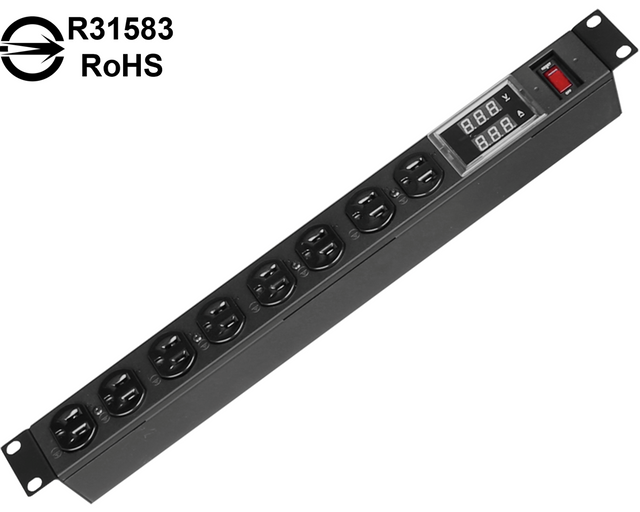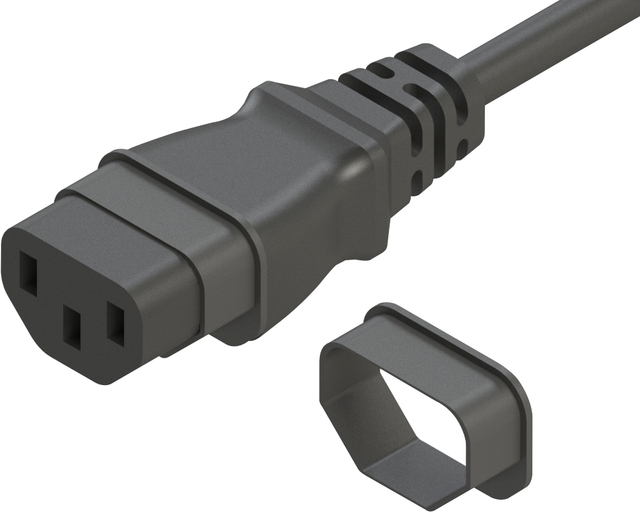- All
- Product Name
- Product Keyword
- Product Model
- Product Summary
- Product Description
- Multi Field Search
Views: 0 Author: Site Editor Publish Time: 2025-05-30 Origin: Site

Do you often find yourself tangled in a mess of wires? A power cord and a power strip are essential, but they serve different purposes. Many people confuse the two, not understanding their unique functions.
This post will help clarify their differences. You’ll learn when to use each, the key features of power cords and power strips, and how to choose the right one for your needs.
A power cord is a simple but essential component that allows electricity to flow from an outlet to an electrical device. It is a single cable that connects a device, such as a laptop or a lamp, directly to a power source. Power cords typically consist of a plug on one end that goes into the outlet and connectors on the other end to supply power to the device.
Simplicity: A power cord is a straightforward and effective solution to connect devices to a power source.
Variety: They come in different lengths, designs, and voltages, making them adaptable to many devices like computers, TVs, lamps, and more.
Usage: They are used to directly connect a device to the wall outlet, providing the necessary power for the device to operate.
Power Cord vs. Power Strip: Key Functionality The core functionality of a power cord is to act as a conduit, delivering power from the electrical outlet to the device. Unlike power strips, which offer multiple outlets, a power cord is designed for single-device use.
A power strip (or surge protector) is a device that allows you to connect multiple devices to a single power source. It typically has a single plug that goes into the wall and multiple sockets where you can plug in your electronics. Power strips are often used in environments where many devices need power at once, such as office setups or entertainment centers.
Multiple Outlets: A power strip offers several outlets from a single source, making it ideal for situations where multiple devices need to be plugged in.
Surge Protection: Many power strips come with built-in surge protection, safeguarding your devices from power surges.
Safety Mechanisms: Advanced power strips may feature circuit breakers, which cut off power if the load exceeds a safe level.

Understanding the distinctions between power cords and power strips is crucial for ensuring safe and efficient power distribution.
Power Cord: A power cord connects a single device directly to a power source.
Power Strip: A power strip extends the number of available outlets from a single power source, allowing multiple devices to be plugged in.
Power Cord: Generally, a power cord does not include built-in safety features like surge protection or overload prevention.
Power Strip: Many power strips are equipped with surge protection, grounding, and circuit breakers to prevent electrical malfunctions and safeguard devices from power surges.
Power Cord: Ideal for situations where only one device needs to be powered and the device is close to an outlet.
Power Strip: Best used when multiple devices need to be connected to one outlet, like in offices, entertainment setups, or computer stations.
To help decide which one you need, here’s a breakdown of when to use a power cord versus a power strip:
| Feature | Power Cord | Power Strip |
|---|---|---|
| Function | Connects one device to a power source | Provides multiple outlets from a single source |
| Use Case | Connecting a single device (e.g., lamp, TV) | Powering multiple devices (e.g., office equipment, entertainment centers) |
| Safety Features | None or basic protection | Often includes surge protection and circuit breakers |
| Typical Use | Simple, direct connection to outlet | Convenient for powering several devices simultaneously |
| Versatility | Limited to one device | More versatile for multiple devices |
Choosing between a power cord and a power strip depends on your power needs and safety requirements. If you're dealing with a single device and it's near an outlet, a power cord will suffice. However, if you need to power multiple devices at once, a power strip is your best bet. It’s also important to consider safety features, especially if you're using sensitive electronics. Always ensure that your power strip is equipped with surge protection to prevent damage during power surges.
Power strips are incredibly useful, but they come with their own set of safety considerations. Overloading a power strip with too many devices can cause it to overheat, increasing the risk of fire. To avoid this, make sure you don't exceed the recommended wattage or amperage for the power strip.
Extension Cord vs. Power Strip Although power strips and extension cords may seem similar, they serve different purposes. An extension cord simply extends the reach of an outlet, while a power strip adds multiple outlets to a single wall socket. It’s important not to mix them up, as doing so can lead to overloading and create a fire hazard.
While power cords are simpler, they can still pose safety risks if they’re damaged or improperly used. Always check the power cord for any frays or exposed wires before use, and never use a damaged power cord. Make sure the power cord is rated for the voltage and amperage required by the device.

Choosing between a power cord and a power strip comes down to your specific needs. For small, single-device use, power cords are efficient and easy to use. But for larger setups requiring multiple devices, power strips are the clear winner. Just be sure to choose the right power strip with surge protection and overload protection to ensure your devices are safe.
In conclusion, understanding the difference between a power cord and a power strip is essential for making the right decision. Whether you need a simple connection for a device or need to power multiple gadgets, choosing the right tool is crucial.
At Sheeline, we specialize in providing top-quality electrical solutions tailored to your needs. Our power cords and power strips are designed with safety and efficiency in mind. Let Sheeline help you create a safer, more efficient setup for all your power needs.
Q: What is the main difference between a power cord and a power strip?
A: A power cord connects a single device to an outlet, while a power strip offers multiple outlets from a single source.
Q: Can I use a power strip with a power cord?
A: Yes, but avoid overloading the circuit. Connecting multiple devices can lead to safety hazards.
Q: How do I choose the right power strip?
A: Look for surge protection and ensure the power strip can handle the wattage of your devices.
Q: Are power strips safe for high-powered appliances?
A: No, high-powered appliances like refrigerators should be plugged directly into a wall outlet, not a power strip.
Q: Can a power cord have multiple outlets?
A: Power cords are typically for single devices, but there are extension cords that include multiple outlets, though they don’t have the same safety features as power strips.
